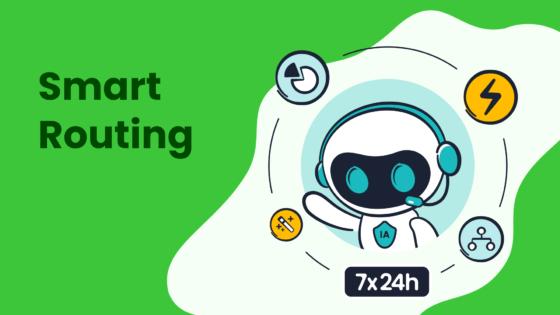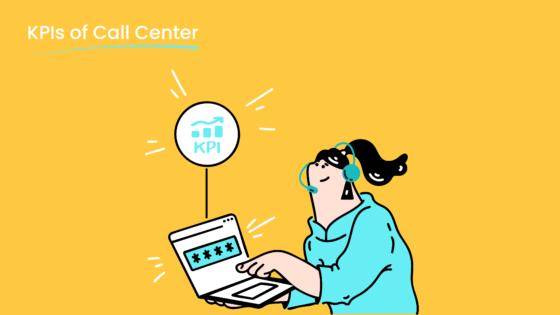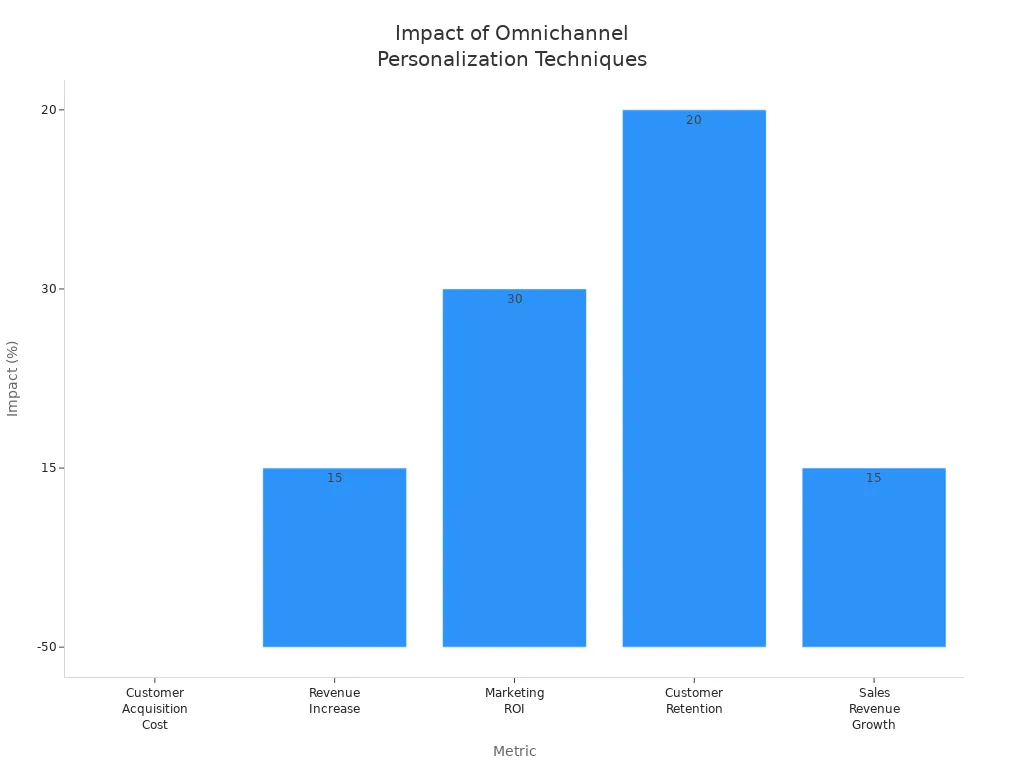How to Master Omnichannel Customer Experience Solutions for Growth

If you want your business to grow, you need to master omnichannel customer experience solutions. When you provide customers with seamless interactions across every channel, you see real results—like an 18% boost in retention and a 25% jump in online sales. Today’s consumers expect a seamless customer experience no matter where they connect with your brand. In fact, 73% of shoppers use more than one channel, and omnichannel campaigns can achieve a 494% higher order rate than single-channel efforts.

With Sobot and Sobot AI, you can deliver consistent, personalized service whether customers call, chat, or message. The Sobot call center tools empower you to build trust and keep every customer experience connected across all touchpoints.
Omnichannel Customer Experience

Definition and Key Concepts
When you hear about omnichannel customer experience, think about a journey where every step feels connected. You can start a conversation on a website, continue it on your phone, and finish it in a store—without repeating yourself. That’s the power of omnichannel. It means you get a seamless, unified experience across all touchpoints and channels.
Here are some key ideas behind omnichannel customer experience:
- Break down silos so your teams work together, not apart.
- Focus on the whole customer journey, not just single channels.
- Centralize customer data for a complete view of each person.
- Use the same measurement metrics everywhere.
- Let analytics guide your decisions, not just gut feelings.
- Make every interaction consistent and personal, no matter where it happens.
Omnichannel customer experience uses technology and AI to connect everything. This approach helps you adapt to changing customer needs, boost sales, and stay ahead of the competition. You can read more about the impact of omnichannel strategies in this Forbes article.
Omnichannel vs. Multichannel
You might wonder how omnichannel is different from multichannel. With multichannel, you offer support on many platforms, but each one works alone. Customers might get different answers or have to repeat themselves. Omnichannel connects every channel, so customers move smoothly between them.
For example, Starbucks lets you order, pay, and earn rewards on their app, website, or in-store. Disney uses its app and MagicBand to personalize your visit. These brands show how omnichannel customer experience leads to happier customers and better business results. Companies with strong omnichannel engagement keep 89% of their customers, while those with weak engagement keep only 33% (Aberdeen Group). Omnichannel marketing also helps you use your resources wisely and see a higher return on investment.
Sobot’s Approach
Sobot takes omnichannel customer experience to the next level. You get a unified workspace where your team can see every customer interaction, no matter the channel. Sobot uses generative AI to personalize each conversation and predict what customers need. Its emotion-aware chatbots and voice assistants can even sense how a customer feels and respond with empathy.
Sobot’s platform brings together real-time data, predictive analytics, and cross-channel experiences. AI handles up to 70% of customer interactions, so your team can focus on complex issues. You can switch between chat, voice, email, and social media without losing context. Sobot’s omnichannel customer service helps you deliver consistent, personalized experiences that keep customers coming back.
Tip: With Sobot, you can future-proof your business and make every customer feel valued—no matter where they reach out.
Benefits of an Omnichannel Strategy
Customer Satisfaction and Loyalty
You want your customers to feel valued every time they interact with your brand. An omnichannel customer experience makes this possible. When you connect all your channels, you give customers a seamless journey. They can start a conversation on social media, get help by email, and finish things up on a call—without repeating themselves. This approach builds trust and keeps people coming back.
- Customers enjoy convenience, consistency, and real-time information.
- Personalized offers and communication boost engagement and loyalty.
- Integrated promotions and service make every experience feel special.
A recent study found that high-quality omnichannel integration increases customer engagement and loyalty. When you provide a reassuring and seamless environment, customers are more likely to stick with you. Privacy and security also matter, so using a secure platform like Sobot helps maintain trust.
“A customer-centric strategy that uses technology to create seamless experiences leads to higher retention and repeat purchases.”
Operational Efficiency
An omnichannel strategy does more than just please your customers. It makes your business run smoother. You can centralize data, automate routine tasks, and use real-time analytics to make smart decisions. Here’s what you gain:
- Streamlined operations and fewer errors
- Unified analytics for faster issue resolution
- Automation that frees up your team for complex tasks
- Lower operational costs and better resource allocation
Companies like Walgreens have seen big improvements by using AI and customer data to optimize their omnichannel marketing. With Sobot, you get a unified workspace and AI-powered tools that help your team work smarter, not harder.
Sobot Customer Story: Opay
Let’s look at Opay, a leading financial service platform. Opay used Sobot’s omnichannel solution to connect social media, email, and voice channels. The results speak for themselves:
| Metric | Improvement Achieved |
|---|---|
| Customer Satisfaction | Increased from 60% to 90% |
| Operational Costs | Reduced by 20% |
| Conversion Rates | Increased by 17% |
Opay’s story shows how a strong omnichannel customer experience strategy can drive real growth. Sobot’s AI-driven platform helped Opay boost customer satisfaction, cut costs, and increase conversions—all while making every customer feel heard.
Mapping the Omnichannel Journey

Identifying Touchpoints
You interact with your customers in many ways every day. These moments are called digital touchpoints. They shape the customer journey and can happen online or offline. Some of the most common digital touchpoints include:
- Social media interactions
- Website visits
- Email communications
- Live chat or chatbot conversations
- Customer service calls
- In-store experiences
- Post-purchase follow-ups
Each touchpoint gives you a chance to build trust and show your brand’s personality. When you keep your messaging and service consistent across all these channels, you create a unified customer journey that feels smooth and reliable. Sobot’s omnichannel platform helps you manage these touchpoints in one place, making it easier to deliver a seamless experience.
Customer Journey Mapping
Mapping the customer journey helps you see things from your customers’ point of view. Start by creating detailed profiles based on real data. Look at how customers move between digital touchpoints, like starting with a website visit and ending with a support call. List every step, from first contact to post-purchase support.
Here’s a simple way to map the journey:
- Collect data from all channels to understand customer behavior.
- Identify every touchpoint and document the journey for different customer types.
- Define what the ideal journey looks like, including smooth transitions between channels.
- Align your team and processes to support this journey.
- Use technology, like Sobot’s AI-driven tools, to automate and personalize interactions.
- Measure results and keep improving based on feedback.
This process helps you spot gaps and make sure every customer feels valued.
Pain Points and Opportunities
When you map the omnichannel journey, you often find pain points that frustrate customers. These can include missing product details, slow website loading, or confusing checkout steps. Sometimes, customers face delays in support or get mixed messages across channels. Even small issues, like broken links or outdated content, can hurt the experience.
But every pain point is also an opportunity. You can fix these problems by:
- Keeping content up to date
- Improving technical performance
- Using unified communication tools like Sobot to avoid miscommunication
- Making checkout simple and fast
- Ensuring your website and app look and work the same everywhere
- Listening to feedback and making changes
By addressing these issues, you improve the customer journey, boost loyalty, and help your business grow.
Implementing Omnichannel Customer Experience Solutions
Unified Platform with Sobot
You want every customer to feel like your business knows them, no matter where they reach out. That’s why a unified platform is the heart of great omnichannel customer experience solutions. With Sobot, you get a single workspace that brings together all your channels—website, social media, email, phone, and more—so you never miss a message or lose track of a conversation.
Here’s what sets Sobot’s unified platform apart:
- It combines CRM and customer data from every channel into one clear view. You see the full story for each customer.
- You can connect with customers on any social network, all from one place.
- The interface is easy to use, so your team can work faster and smarter.
- No more switching between tools or missing important messages.
- Every agent sees the same customer history, which means no more repeated questions or confusion.
- Sobot handles high volumes of interactions without slowing down.
This unified approach means you deliver a seamless customer experience every time. Customers can start a chat on your website, follow up on WhatsApp, and finish with a phone call—all without repeating themselves. You keep the conversation going, and your team stays in sync.
Tip: A unified platform helps you avoid silos and gives your team the power to create a frictionless omnichannel experience.
Integrating Voice/Call Center
Voice is still a key part of customer service, even in a digital world. Sobot’s Voice/Call Center makes it easy to add phone support to your omnichannel strategy. You can answer calls, route them to the right agent, and even use AI-powered voicebots to handle simple questions.
Here’s how Sobot’s Voice/Call Center boosts your omnichannel customer experience solutions:

- The SDK supports web chat, mobile apps, social media, and messaging, so you can engage customers anywhere.
- Intelligent routing sends each call or message to the best agent, based on the customer’s needs.
- You can connect Sobot with your CRM and business tools, giving agents a complete dashboard.
- Voice recognition lets you offer voice-based support that feels natural.
- AI chatbots handle routine questions, freeing up your team for more complex issues.
- Real-time analytics and sentiment analysis help you spot urgent cases and respond fast.
- Custom workflows and automation make support smooth and efficient.
- Multi-language support means you can help customers around the world.
- The robust API lets you connect Sobot with other business systems for even more power.
When you bring voice into your omnichannel mix, you see big results. Companies using integrated voice and call center solutions report a 20-30% jump in customer satisfaction and a 91% increase in retention year-over-year. Agents resolve issues faster because they see the full customer history, and customers enjoy seamless transitions between channels.
| Benefit | Impact on Omnichannel Strategy |
|---|---|
| Unified customer view | Personalized service, less repetition |
| Faster resolution times | Happier customers, lower costs |
| Consistent service quality | Higher first-contact resolution |
| Data-driven insights | Continuous improvement |
| Seamless channel switching | Frictionless omnichannel experience |
Note: Sobot’s Voice/Call Center is available globally, with 99.99% uptime and secure, encrypted data transfer. You can learn more about its features here.
Personalization and Automation
Personalization is what makes customers feel special. Automation is what makes your team efficient. Sobot brings both together in its omnichannel customer experience solutions. You can use AI to understand what each customer wants, then deliver the right message at the right time.
Let’s look at some of the ways Sobot helps you personalize and automate:
- Omnichannel AI connects all your channels—website, app, social media, email, phone, SMS, and voicebots—so you keep context and consistency.
- Scenario-based AI adapts to your industry, offering personalized help before, during, and after a sale.
- Multi-faceted AI supports customers with virtual agents, helps your team with reply suggestions, and gives admins detailed dashboards.
- Generative AI uses advanced models to craft human-like, industry-specific responses.
- Voice bots provide 24/7 support, qualify leads, and answer questions using real-time data.
- Secure AI keeps customer data safe and meets global privacy standards.
| Technique/Strategy | Description/Benefit | Example Brands/Case Studies |
|---|---|---|
| Unified Customer Data (CDP) | Seamless, consistent experiences across channels | Slazenger, HipVan, MAC Cosmetics |
| AI-Powered Recommendations | Tailored product suggestions, higher conversions | Slazenger, HipVan, MAC Cosmetics |
| Marketing Automation Platforms | Targeted, timely, and personalized communication | Company A |
| CRM Integration | Informs personalized messaging and loyalty programs | Company A |
Personalization and automation drive real results. For example, Company A unified its loyalty program and personalized messaging, which increased customer retention by 20% and sales revenue by 15%. Sobot’s automation features also reduce agent workload by 60%, improve conversion rates by 15%, and boost Net Promoter Scores by 35%.

Pro Tip: Use Sobot’s AI-driven automation to deliver a unified experience and frictionless omnichannel experience, so every customer feels like your top priority.
Team Training and Alignment
Even the best technology needs a skilled team behind it. To get the most from omnichannel customer experience solutions, you need to train your team and keep everyone aligned.
Here’s how you can set your team up for success:
- Provide ongoing training so everyone knows how to use all channels and tools.
- Cross-train your team so they understand the full omnichannel strategy.
- Give employees the resources they need to engage customers everywhere.
- Align goals across marketing, sales, and customer service to break down silos.
- Foster teamwork and open communication to keep your brand voice consistent.
- Build cross-functional teams with people from every department.
- Use change management to help everyone adapt to new tools and processes.
When your team is trained and aligned, you deliver a seamless customer experience every time. Customers notice when your staff is confident and helpful, no matter how they reach out. This teamwork helps you overcome common challenges like data silos, inconsistent messaging, and process inefficiencies.
Remember: A unified team creates a unified customer experience. Invest in training and collaboration to make your omnichannel strategy a success.
Optimizing Your Omnichannel Approach
Performance Metrics and KPIs
You want to know if your omnichannel approach is working. The best way is to track the right performance metrics and KPIs. These numbers show how well your customer experience strategy supports your business goals. Here’s a table with some of the most important KPIs and what they mean for your business:
| KPI Name | Description and Importance |
|---|---|
| Customer Satisfaction Score (CSAT) | Measures how happy customers are with your service. Helps you spot areas to improve. |
| Net Promoter Score (NPS) | Shows how likely customers are to recommend you. Indicates loyalty and brand health. |
| Customer Retention Rate (CRR) | Tracks how many customers stay with you over time. High rates mean strong loyalty. |
| Customer Lifetime Value (CLV) | Tells you how much revenue you can expect from a customer. Guides your resource planning. |
| Conversion Rate (CVR) | Shows what percent of users take action, like making a purchase. Helps you see if your channels work well. |
| Customer Acquisition Cost (CAC) | Measures how much it costs to get a new customer. Lower costs mean better efficiency. |
| Return on Investment (ROI) | Tells you if your campaigns are profitable. |
| Engagement Rate | Looks at how much customers interact with your brand. Higher rates mean better customer engagement. |
| Bounce Rate | Shows how many visitors leave after one page. High rates can mean problems with your content or site. |
| Channel-Specific Traffic | Tracks how many people use each channel. Helps you focus your efforts. |
Tracking these KPIs gives you a clear view of your omnichannel strategy’s strengths and weaknesses. You can compare your numbers to industry benchmarks, like NPS or CSAT, to see how you stack up against others. Companies that keep a close eye on these metrics often find new ways to improve the customer journey and boost results.
Customer Feedback and Continuous Improvement
Listening to your customers is key to making your omnichannel approach better. You can collect feedback in many ways—surveys, social media, phone calls, and online reviews. Sobot’s platform makes it easy to gather and organize feedback from every channel in one place.
Here’s a simple process you can follow:
- Set clear goals for what you want to improve, like faster support or better product features.
- Collect feedback from all your channels, using tools like surveys and social listening.
- Sort feedback into groups, such as service, product, or complaints.
- Use AI to spot trends and find pain points in the customer journey.
- Take action on what you learn. Fix issues and let customers know you heard them.
- Keep reviewing your process to make sure you always meet customer needs.
Tip: Closing the feedback loop builds trust. When customers see you act on their input, they feel valued and stay loyal.
Industry leaders use benchmarks like NPS, CSAT, and Customer Effort Score (CES) to measure progress. Comparing your scores to others helps you find gaps and set new goals for your customer experience strategy.
Scaling with Sobot
As your business grows, your omnichannel approach needs to keep up. Sobot helps you scale without losing quality or consistency. You get a unified customer data platform that brings together information from every touchpoint—website, app, social media, and in-store. This single view lets you deliver a seamless experience at every step of the customer journey.
Sobot’s AI-powered chatbots and self-service tools handle routine questions 24/7. This means your team can focus on complex issues. For example, OPPO used Sobot’s chatbot and saw an 83% resolution rate and a 57% jump in repeat purchases. Companies using omnichannel AI strategies like Sobot’s keep 89% of their customers, compared to just 33% for those with weaker strategies.
To scale your omnichannel strategy, try these best practices:
- Invest in platforms that unify customer data for a complete view.
- Use AI and automation to personalize every interaction.
- Map the customer journey across all channels to spot new opportunities.
- Keep your data clean and secure for reliable insights.
Note: Experts predict that by 2025, AI will handle 95% of customer interactions. Now is the time to invest in tools like Sobot to future-proof your customer engagement.
Omnichannel customer experience solutions can transform your business. Companies that focus on seamless cross-channel journeys see faster growth and stronger loyalty. Sobot leads the way with AI-driven tools that cut waiting times and boost efficiency. You can start by upgrading your systems, training your team, and using Sobot’s unified platform. Take action now to see higher conversions, better retention, and happier customers. 🚀
FAQ
What are omnichannel customer experience solutions?
Omnichannel customer experience solutions help you connect with customers across all channels—like chat, email, phone, and social media—in one place. You give customers a smooth journey, no matter how they reach out. Sobot’s platform makes this easy and keeps every interaction consistent.
How do omnichannel customer experience solutions improve customer satisfaction?
You make customers happy by letting them switch channels without repeating themselves. For example, Opay used Sobot’s omnichannel customer experience solutions and raised satisfaction from 60% to 90%. Customers love fast, personal support. Read more about Opay’s results.
Can Sobot’s omnichannel customer experience solutions save my team time?
Yes! Sobot’s AI-driven automation handles up to 70% of routine questions. Your team can focus on complex issues. This reduces workload and speeds up response times. Many businesses see a 30% boost in productivity with Sobot’s omnichannel customer experience solutions.
Is it hard to set up omnichannel customer experience solutions with Sobot?
Not at all. Sobot’s unified workspace brings all your channels together. You can integrate with your CRM and business tools quickly. The platform supports global teams and offers 99.99% uptime. You get help every step of the way. Learn more about Sobot’s features.
See Also
A Step-By-Step Approach To Omnichannel Contact Centers
Comprehensive Guide To Omnichannel Software For Call Centers
How To Excel At Live Chat Within Retail Business